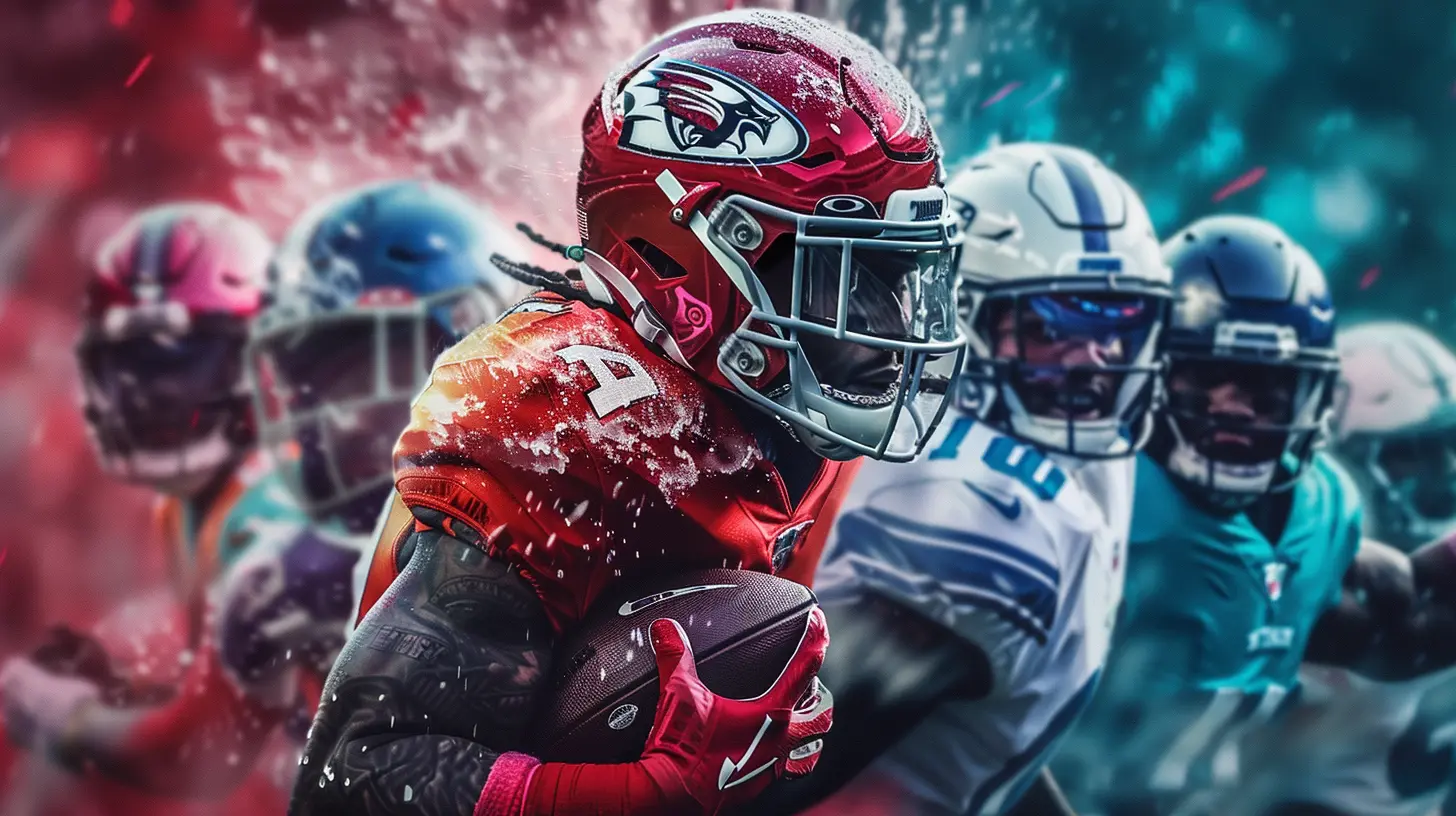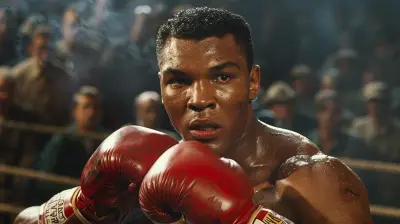The Free Agent Dilemma: Win Now or Build for the Future?
24 November 2025
Free agency is like a high-stakes poker game. Do you go all-in for a championship now, or do you play it safe and build for a long-term future? Every offseason, teams in every major league face this exact dilemma. Do they spend big and take a shot at immediate glory, or do they exercise patience, focus on development, and play the long game?
Let's break down both sides of the debate and figure out whether teams should chase a title with free agent signings or slowly craft a dynasty. 
The Temptation of "Win Now"
Every general manager, coach, and fan dreams of a championship. And let’s be honest—nothing excites a fanbase like a big-name free agent signing.1. Instant Impact
Signing a top-tier free agent is like adding a turbo boost to a team. You don’t have to wait years for young players to develop—your new star is ready to dominate right away.Think about teams like the 2020 Tampa Bay Buccaneers. They went all-in on Tom Brady, added key veterans like Rob Gronkowski and Antonio Brown, and won the Super Bowl in the same season. No rebuilding, no waiting. Just instant results.
2. Keeping Fans and Owners Happy
Winning sells tickets. It brings in sponsorships. It creates buzz. Owners love winning because it’s good for business, and fans are more invested in teams that are competing for a championship.When a franchise makes a big splash in free agency, it sends a message: "We're serious about winning." That keeps the fanbase engaged and excited.
3. Giving Your Core a Chance
Sometimes, teams already have a great core of players, and all they need is that one missing piece. A great free agent signing can be the final puzzle piece that turns a contender into a champion. Look at the 2019 Toronto Raptors—they had a solid team but needed a superstar. Enter Kawhi Leonard. One year later, they were NBA champions.But while "win now" sounds great, it comes with some serious risks. 
The Dangers of Going All-In
1. Salary Cap Nightmares
Big contracts can haunt teams for years. Sure, signing a superstar might make sense today, but what happens when that player declines? A long-term deal can turn into a serious financial burden.The Los Angeles Lakers, for instance, landed LeBron James and Anthony Davis, winning the 2020 NBA title. But now, with aging stars and a bloated payroll, they’re struggling to stay competitive.
2. Chemistry Issues
Not every star signing works out. Some free agents struggle to fit into new systems or clash with teammates. Building a championship team isn’t just about talent—it’s about chemistry.Remember when the Brooklyn Nets assembled Kevin Durant, James Harden, and Kyrie Irving? On paper, they looked unstoppable. In reality, injuries, drama, and clashing egos prevented them from reaching their full potential.
3. Mortgaging the Future
Teams that go all-in often sacrifice their future. Draft picks are traded away, young talent is neglected, and once the championship window closes, they’re left scrambling.A great example? The 2011 Philadelphia Eagles, nicknamed the "Dream Team" after signing several big-name free agents. They were expected to dominate, but instead, they collapsed and spent years rebuilding.
So if going all-in is risky, what about the other approach—building for the future? 
The Patience of Building for the Future
While flashy free agent signings make headlines, long-term team-building is the key to sustained success. Some of the greatest dynasties in sports were built through patience and smart decisions rather than blockbuster free agent deals.1. Draft and Develop
Instead of spending big on free agents, many teams invest in scouting, drafting, and developing young talent. This strategy creates a strong foundation for long-term success.The Golden State Warriors are a prime example. They drafted Steph Curry, Klay Thompson, and Draymond Green—none of whom were considered superstars at the time. But with patience and development, they became one of the most dominant teams in NBA history.
2. Financial Flexibility
Teams that avoid massive free-agent contracts have the flexibility to make smart financial moves. Instead of being tied down by bad contracts, they can re-sign homegrown talent or make strategic trades when the opportunity arises.Just look at the New England Patriots under Bill Belichick. They rarely broke the bank for free agents, yet consistently found success by developing players and making cost-effective moves.
3. Sustainable Success
Quick fixes might get you one championship, but smart team-building sets you up for long-term dominance. The San Antonio Spurs, for example, mastered the art of drafting and developing players. Their patient approach helped them stay competitive for two decades, winning five NBA titles.But building for the future isn't always easy… 
The Risks of a Long-Term Approach
1. Fans Can Get Impatient
Let’s face it—rebuilding is tough for fans. Nobody likes waiting years for a team to become competitive, especially when rivals are making big moves. A franchise that constantly preaches patience can test the loyalty of its supporters.Look at the Process-era Philadelphia 76ers. They tanked for multiple seasons, stockpiled draft picks, and endured plenty of losing before they became a contender. While the strategy eventually worked, it required years of suffering.
2. No Guarantee of Success
Building through the draft doesn't always work. For every Golden State Warriors success story, there's a team like the Sacramento Kings—who’ve spent years rebuilding without much to show for it.Draft picks are great in theory, but they’re unpredictable. Not every young prospect develops into a superstar, and not every long-term plan leads to success.
3. The Window Might Close Before You’re Ready
Sometimes, teams wait too long. They focus so much on the future that by the time their players develop, the competition has changed. A slow approach can backfire if rivals leap ahead with aggressive moves.A prime example? The Oklahoma City Thunder. They had a young core of Kevin Durant, Russell Westbrook, and James Harden but hesitated to go all-in. Before they knew it, Harden was gone, Durant left, and their championship window slammed shut before they could capitalize.
So, What’s the Right Approach?
At the end of the day, both strategies have their advantages and risks. The best teams find a way to balance both approaches—making smart signings while also focusing on long-term development.When to Go All-In:
- When you have a championship-caliber core that just needs a finishing touch.- If your franchise has a history of struggling to attract stars in free agency (sometimes, you have to overpay).
- When a rare superstar becomes available and can instantly elevate your team.
When to Build for the Future:
- If your roster isn’t close to contending, and a major signing won’t change that.- When smart drafting and young talent development can provide long-term stability.
- If financial flexibility and sustainability are top priorities.
The best teams don’t just follow one philosophy—they adapt. Sometimes, the "win now" move makes sense. Other times, patience is the best path. The key is knowing when to push your chips to the center of the table—and when to hold them for a better hand.
Sports history is filled with examples of both successes and failures in free agency. But one thing is certain—every offseason, teams face the same dilemma: win now or build for the future? The answer might depend on timing, strategy, and a little bit of luck.
all images in this post were generated using AI tools
Category:
Free AgentsAuthor:

Everett Davis
Discussion
rate this article
1 comments
Christina Webster
Why choose between winning now and building for the future? Let’s just draft a time machine and do both! Just imagine the championship parades and future Hall of Famers!
November 24, 2025 at 5:39 AM


